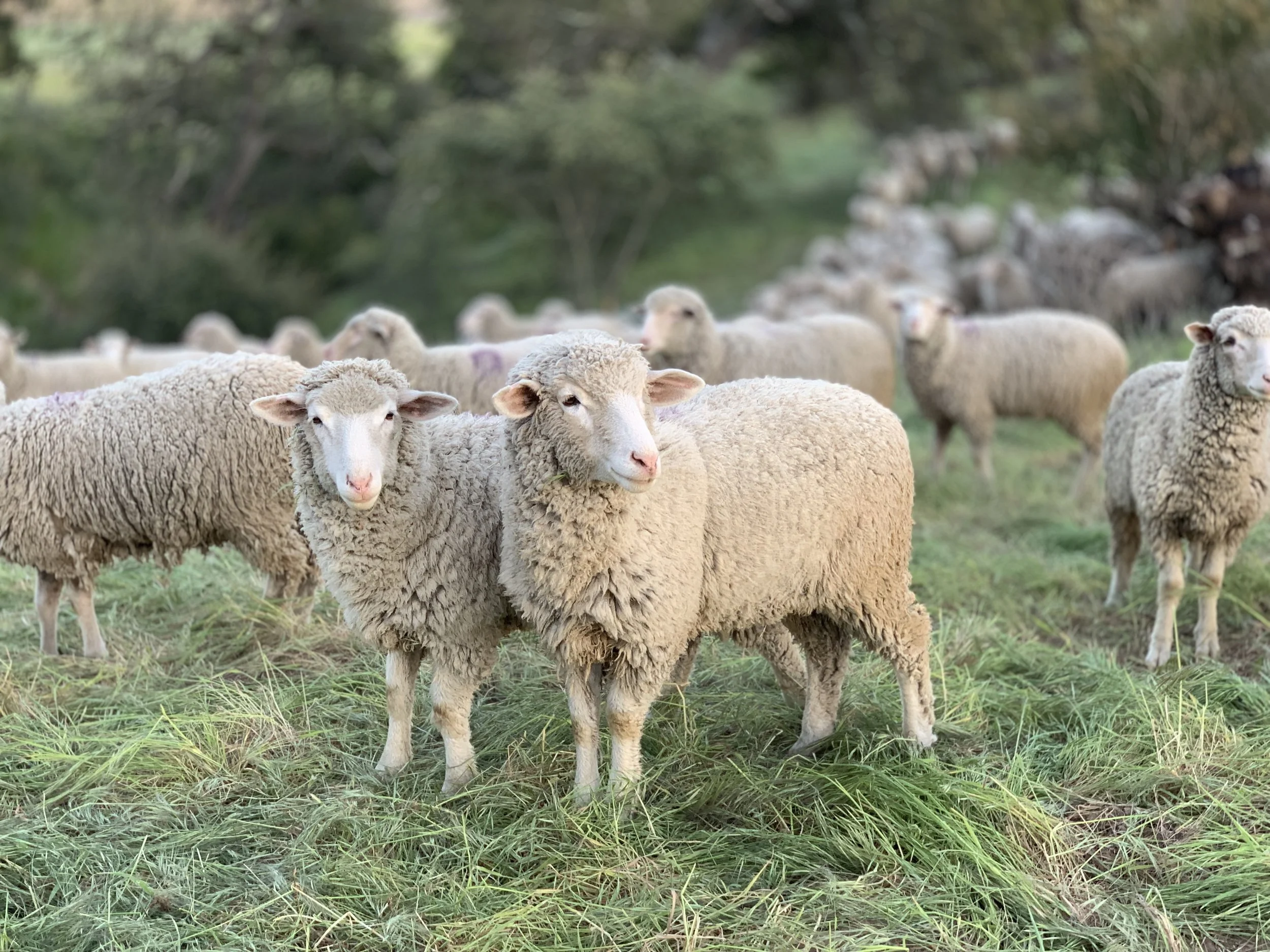Sheep grazing at the side of the trail.
Hikers at the San Marcos Foothills Preserve in late March and early April were treated to an unusual sight – more than 400 sheep grazing near the trail. Fortunately, we had volunteers step up to serve as docents and help explain what was going on. The sheep were being grazed in a series of 2-acre pastures. They would be in each pasture for a day or two, and then moved to an adjacent pasture, and then again over a 30 day period. Our goal is to restore the grassland so that it provides habitat for birds such as western meadowlark and burrowing owl. The population numbers of both of these species have declined dramatically in North America over the past 100 years.
The San Marcos Foothills Preserve supports about 50 acres of grassland. There is much less grassland in California than there used to be due to urban expansion and farming, and most of what’s left has been taken over by invasive annual grasses from Europe and the Mediterranean region. As a result, many of the species that rely on healthy grasslands have been displaced.
In the distant past, ground sloths, mastodons, wild horses, mammoths, and other prehistoric megafauna inhabited this region. In more recent time, elk and deer were common grazers in the Santa Barbara area grasslands. The grasses native to California evolved in the presence of these grazing animals. Thus, the grasses themselves are adapted to withstand trampling and grazing by large numbers of animals in small spaces over short periods of time.
In an effort to re-create the effects of herds of grazing animals, we are bringing a large number of sheep to these grasslands for short periods of time. Grazing can be helpful or destructive. The results depend on the timing (when they start and stop), the type and number of animals, the density of those animals, the food (grass and shrubs) available, the state of the vegetation (with or without seeds), and the weather. If it goes well, non-native annual grasses will be suppressed, perennial grasses and associated plants will thrive, and thatch will be reduced.
Sheep being herded between grazing areas.
For almost a month, we moved the sheep from pasture to pasture and gradually grazed most of the grassland on the Preserve. Now (summer 2019), a few months after the sheep were removed, we are observing that the native perennial grasses that were not grazed are alive but brown at the top; whereas the native perennial grasses that were grazed are very much alive, vibrant and green. We are also noticing that there seems be less thatch in the grazed areas. This is a good thing for many native animals and plants. We plan to bring the sheep back to the Preserve after the next few rains, when the annual and perennial grasses turn green (often in December). The sheep grazing brought lots of interest from the community and a large number of people showed up to volunteer to help move the sheep from the east side to the west side of the Preserve. Everyone had a good time, and maybe the sheep did too. Well…maybe not, but they liked where they ended up anyway, in a nice patch of tasty grass and shrubs. We also got a lot of positive feedback from neighbors who expressed gratitude for the reduction of vegetation in this fire prone area, and for the way it was done – with animals rather than machinery.
Thank you to the many people that volunteered to be docents near each pasture to help answer passersby’s questions, and to the many, many people that joined us in helping to herd sheep from one end of the preserve to the other. Funding is needed to support next year’s grazing program, so please consider making a contribution to support the effort.
Sunset at the Preserve




